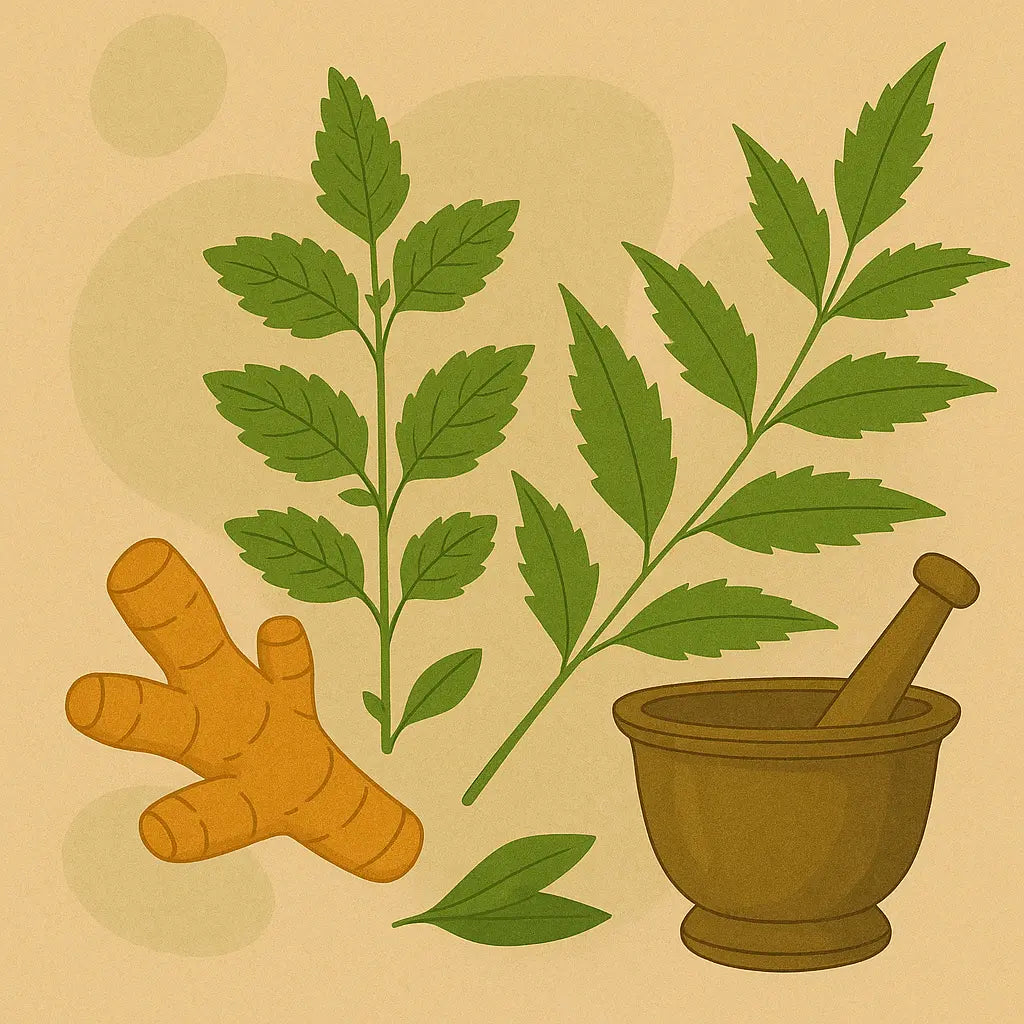
January 09, 2025
Ayurvedic perspective on Hyperacidity
Ayurveda, the ancient system of natural healing, has been practiced for thousands of years in India. Its holistic approach to health focuses on balancing the mind, body, and spirit through natural remedies, diet, lifestyle adjustments, and therapies. In this post, we’ll explore the core principles of Ayurveda and how you can incorporate them into your daily routine for a healthier and more balanced life.

Hyperacidity, known as Amlapitta in Ayurveda, is a common digestive disorder caused by an imbalance of the Pitta dosha. It occurs due to excessive acid production in the stomach, leading to discomfort such as heartburn, acid reflux, indigestion, nausea, and a burning sensation in the chest and throat. Ayurveda attributes hyperacidity to an aggravated Pitta, weakened Agni (digestive fire), and improper dietary and lifestyle habits. Unlike conventional treatments that focus only on symptom relief, Ayurveda takes a holistic approach to balancing digestion and preventing recurrence.
According to Ayurveda, hyperacidity can manifest in different ways depending on the dosha involvement. Pitta-type hyperacidity is characterized by severe acidity, a burning sensation, sour belching, and excessive thirst. It worsens with spicy, fried, and acidic foods, excessive stress, and heat exposure. Vata-type hyperacidity presents with bloating, irregular digestion, dryness, and sharp pain in the stomach. It is aggravated by fasting, erratic eating patterns, and excessive caffeine intake. Kapha-type hyperacidity manifests as heaviness, lethargy, mucus in the stools, and slow digestion, often triggered by overeating, dairy consumption, and a sedentary lifestyle. The Ayurvedic approach to hyperacidity focuses on balancing the doshas through dietary modifications, lifestyle changes, herbal remedies, and detoxification therapies.
Ayurvedic Treatment Protocol for Hyperacidity
Dietary Modifications
A diet that pacifies Pitta dosha and strengthens Agni is essential for managing hyperacidity. Cooling, alkaline, and easily digestible foods help neutralize excess stomach acid. Recommended foods include coconut water, soaked almonds, cooling vegetables like cucumber and zucchini, and fresh fruits such as bananas, melons, and pomegranates. Buttermilk infused with cumin and coriander is beneficial for soothing the stomach. Spices like fennel, coriander, and cardamom aid digestion without increasing heat. It is important to avoid spicy, fried, fermented, and highly acidic foods such as tomatoes, citrus fruits, vinegar, and caffeine, as they aggravate hyperacidity. Drinking a glass of warm water with a teaspoon of ghee before bedtime helps reduce acidity and heal the digestive lining.
Lifestyle and Daily Routine (Dinacharya)
Lifestyle and Daily Routine (Dinacharya)
Maintaining a disciplined daily routine supports digestive health and prevents hyperacidity flare-ups. Waking up early and eating meals at regular intervals ensures stable Agni. Eating in a calm, mindful manner and avoiding distractions while eating can improve digestion. Light exercises such as yoga, walking, and stretching aid digestion, while excessive physical exertion and heavy workouts should be avoided, especially on an empty stomach. Practices like Pranayama and meditation help in stress management, which is crucial as stress is a major trigger for hyperacidity. Adequate hydration is essential, but excessive fluid intake, especially during meals, should be avoided as it dilutes digestive enzymes.
Herbal Remedies
Ayurveda prescribes several herbs to balance Pitta and enhance digestion. Amla is a potent cooling agent that reduces acidity, promotes healing of the stomach lining, and strengthens digestion. Yashtimadhu soothes the gastric mucosa and prevents acid reflux. Shatavari is highly effective in reducing inflammation and cooling excess Pitta. Guduchi is an excellent detoxifying herb that enhances digestion and strengthens immunity. Cumin, coriander, and fennel seeds can be used in cooking or as herbal infusions to aid digestion and prevent acidity.
Detoxification and Panchakarma Therapies
Ayurvedic detoxification therapies help eliminate accumulated toxins and balance Pitta. Virechana (therapeutic purgation) is highly beneficial in removing excess Pitta from the body and restoring digestive balance. Abhyanga (oil massage) with cooling oils such as coconut or sandalwood soothes the nervous system and improves digestion. Takradhara (medicated buttermilk therapy) has a cooling effect on the mind and body, reducing stress-related hyperacidity. Nasya (nasal therapy) helps balance Pitta and improve overall digestion. Periodic detoxification with herbal formulations helps prevent acid buildup and ensures long-term digestive health.
Mental and Emotional Well-being
Since emotional stress is a major contributor to hyperacidity, Ayurveda emphasizes a balanced mind-body approach. Practices such as gratitude journaling, mindful eating, and relaxation techniques help in identifying and addressing emotional triggers. Spending time in nature, engaging in creative activities, and maintaining a positive mindset contribute to overall well-being and digestive health.
Hyperacidity is a manageable condition when approached holistically. Ayurveda provides a time-tested and natural solution by addressing the root cause rather than merely suppressing symptoms. A proper diet, disciplined lifestyle, herbal support, detoxification therapies, and emotional well-being contribute to long-term relief and improved digestive health. Ayurveda teaches that true healing begins from within, when we nurture our digestive fire and bring balance to our body, we pave the way for a healthier and more vibrant life. By incorporating small yet consistent changes in diet and lifestyle, one can experience lasting improvements in digestion and overall well-being.
 Free & discreet shipping on all prescriptions
Free & discreet shipping on all prescriptions
 No insurance required
No insurance required



